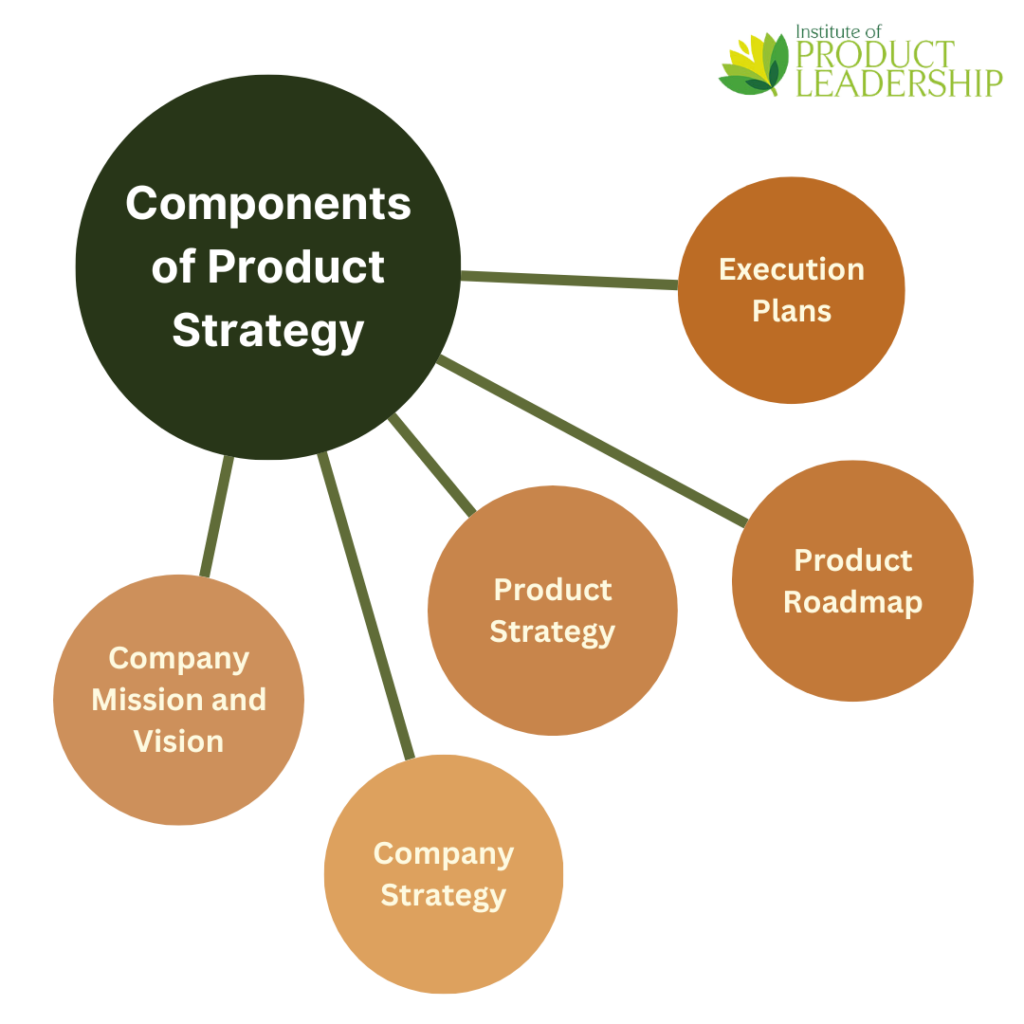What is product strategy? How to create good product strategy?
- Strategy
- 5 min read
In the world of business, every company strives to achieve certain goals and objectives. These goals are often driven by a company’s mission and vision. However, it is important to have a clear product strategy in order to align with the overall company strategy and effectively meet the needs of the target audience. In this blog, we will explore the concept of product strategy and its importance in driving the success of a company.
Key Takeaways:
- Product Strategy’s Crucial Role: A clear product strategy is essential for a company’s success, aligning with its mission and vision to meet the needs of the target audience, ensuring that all product decisions contribute to overall goals.
- Key Components of Product Strategy: Product strategy comprises components such as company mission and vision, company strategy, product strategy, product roadmap, and execution plans, all working together to drive success and guide product development.
- Company Mission and Vision as Foundation: The company mission and vision serve as the foundation for product strategy, defining the purpose and direction of the company, guiding decision-making. For instance, Microsoft’s mission is to empower everyone to achieve more.
- Product Roadmap’s Visual Guidance: The product roadmap, a visual representation of planned development and releases, communicates the product strategy, outlining key features and milestones to align stakeholders and drive success.
- Structured Approach with Busser Method: The Busser Method provides a structured approach to creating a product strategy. It involves defining business goals, identifying target audiences, exploring solution spaces, prioritizing features, developing execution plans, and measuring success with defined metrics and KPIs.
Defining Product Strategy
Product strategy is the roadmap that guides the development, launch, and ongoing improvement of a product. It is the plan that outlines how a company will achieve its business goals and objectives through its products. A solid product strategy ensures that all decisions related to the product align with the company’s mission and vision.
The Components of Product Strategy
Product strategy is composed of several key components that work together to drive success. These components include:
- Company Mission and Vision
- Company Strategy
- Product Strategy
- Product Roadmap
- Execution Plans

1. Company Mission and Vision
The company mission and vision serve as the foundation for the product strategy. They define the purpose and direction of the company and provide guidance for product decision-making. For example, Microsoft’s mission is to empower everybody to achieve more.
2. Company Strategy
The company strategy outlines how the company plans to achieve its goals and objectives. It provides a high-level plan for moving the company forward. In the case of Microsoft, their company strategy is currently focused on being mobile-first and cloud-first.
3. Product Strategy
Product strategy is derived from the company mission, vision, and strategy. It outlines how a specific product will contribute to the overall success of the company. Each product should have its own strategy that aligns with the company’s goals and objectives. This strategy drives the product roadmap and execution plans.
4. Product Roadmap
The product roadmap is a visual representation of the planned product development and release schedule. It outlines the key features and milestones that will be delivered over a specific time period. The roadmap helps to communicate the product strategy and align all stakeholders.
5. Execution Plans
Execution plans detail how the product roadmap will be implemented. This includes working with engineers to determine the feasibility of features, defining the execution roadmap, and setting release dates. Execution plans ensure that the product strategy is translated into actionable steps.
The Busser Method
When it comes to creating a product strategy, it can be helpful to follow a structured approach. One such approach is the Busser Method. This method helps product managers and teams define their business goals, target audience, solution spaces, prioritization, and execution plans.
The Busser Method consists of the following steps:
1. Business Goal: Start by identifying the business goal or goals that the product strategy aims to achieve. This could be acquiring new users, increasing revenue, or expanding into new markets.
2. Target Audience: Determine the specific target audience or audiences for the product. This could be consumers, small and medium-sized businesses, or a specific industry segment.
3. Solution Spaces: Explore the various solution spaces that can help achieve the business goal. Consider the features and functionalities that can drive success for the target audience.
4. Prioritisation: Prioritise the features and functionalities based on their importance and impact. Consider trade-offs and sacrifices that may need to be made in order to achieve the desired outcomes.
5. Execution Plans: Develop a roadmap for executing the product strategy. Work with engineers and stakeholders to determine timelines, resource allocation, and release plans.
6. Measurement of Success: Define the metrics and key performance indicators that will be used to measure the success or failure of the product strategy. This includes tracking user acquisition, revenue growth, and other relevant metrics.
Summary
A well-defined product strategy is essential for the success of any company. It aligns the development and release of products with the overall goals and objectives of the organisation. By following a structured approach, such as the Busser Method, product managers can create effective product strategies that drive growth and meet the needs of their target audience. Remember, product strategy is the roadmap to success!
Frequently Asked Questions
Transitioning to product leadership involves gaining experience in product management, honing leadership skills, and showcasing a track record of successful product outcomes. Start by excelling in product management roles, taking on leadership responsibilities, and seeking mentorship from established product leaders.
To transition to a product management role, focus on acquiring relevant skills such as market research, user experience design, and strategic thinking. Tailor your resume to highlight transferable skills and consider obtaining certifications in product management. Networking with professionals in the field and seeking informational interviews can also open doors to opportunities.
Moving into product leadership involves demonstrating a deep understanding of product management, showcasing leadership qualities, and taking on roles with increasing responsibilities. Seek out leadership opportunities within your current organization, mentor junior team members, and stay updated on industry trends to position yourself as a valuable asset for leadership roles.
Yes, product management is inherently a leadership role. Product managers are responsible for guiding the development and success of a product, which involves making strategic decisions, collaborating with cross-functional teams, and aligning efforts towards a common vision. Effective product managers exhibit strong leadership skills to drive innovation and achieve business objectives.






